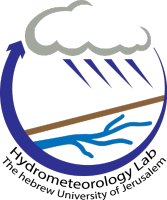Morin E, Goodrich DC, Maddox RA, Gao X, Gupta HV, Sorooshian S.
Rainfall modeling for integrating radar information into hydrological model. Atmospheric Science Letters [Internet]. 2005;6 :23–30.
Publisher's VersionAbstractA spatial rainfall model was applied to radar data of air mass thunderstorms to yield a rainstorm representation as a set of convective rain cells. The modeled rainfall was used as input into hydrological model, instead of the standard radar-grid data. This approach allows a comprehensive linkage between runoff responses and rainfall structures
Morin E, a. Maddox R, Goodrich DC, Sorooshian S.
Relationship for Summer Monsoon Storms in Arizona. Weather and Forecasting [Internet]. 2005;20 :672–679.
Publisher's VersionAbstractRadar-based estimates of rainfall rates and accumulations are one of the principal tools used by the National Weather Service (NWS) to identify areas of extreme precipitation that could lead to flooding. Radar-based rainfall estimates have been compared to gauge observations for 13 convective storm events over a densely instrumented, experimental watershed to derive an accurate reflectivity–rainfall rate (i.e., Z–R) relationship for these events. The resultant Z–R relationship, which is much different than the NWS operational Z–R, has been examined for a separate, independent event that occurred over a different location. For all events studied, the NWS operational Z–R significantly overestimates rainfall compared to gauge measurements. The gauge data from the experimental network, the NWS operational rain estimates, and the improved estimates resulting from this study have been input into a hydrologic model to “predict” watershed runoff for an intense event. Rainfall data from the gauges and from the derived Z–R relation produce predictions in relatively good agreement with observed streamflows. The NWS Z–R estimates lead to predicted peak discharge rates that are more than twice as large as the observed discharges. These results were consistent over a relatively wide range of subwatershed areas (4–148 km2). The experimentally derived Z–R relationship may provide more accurate radar estimates for convective storms over the southwest United States than does the operational convective Z–R used by the NWS. These initial results suggest that the generic NWS Z–R relation, used nationally for convective storms, might be substantially improved for regional application.
Shamir E, Imam B, Morin E, Gupta HV, Sorooshian S.
The role of hydrograph indices in parameter estimation of rainfall-runoff models. Hydrological Processes [Internet]. 2005;19 :2187–2207.
Publisher's VersionAbstractA reliable prediction of hydrologic models, among other things, requires a set of plausible parameters that correspond with physiographic properties of the basin. This study proposes a parameter estimation approach, which is based on extracting, through hydrograph diagnoses, information in the form of indices that carry intrinsic properties of a basin. This concept is demonstrated by introducing two indices that describe the shape of a streamflow hydrograph in an integrated manner. Nineteen mid-size (223–4790 km2) perennial headwater basins with a long record of streamflow data were selected to evaluate the ability of these indices to capture basin response characteristics. An examination of the utility of the proposed indices in parameter estimation is conducted for a five-parameter hydrologic model using data from the Leaf River, located in Fort Collins, Mississippi. It is shown that constraining the parameter estimation by selecting only those parameters that result in model output which maintains the indices as found in the historical data can improve the reliability of model predictions. These improvements were manifested in (a) improvement of the prediction of low and high flow, (b) improvement of the overall total biases, and (c) maintenance of the hydrograph's shape for both long-term and short-term predictions. Copyright © 2005 John Wiley & Sons, Ltd.

